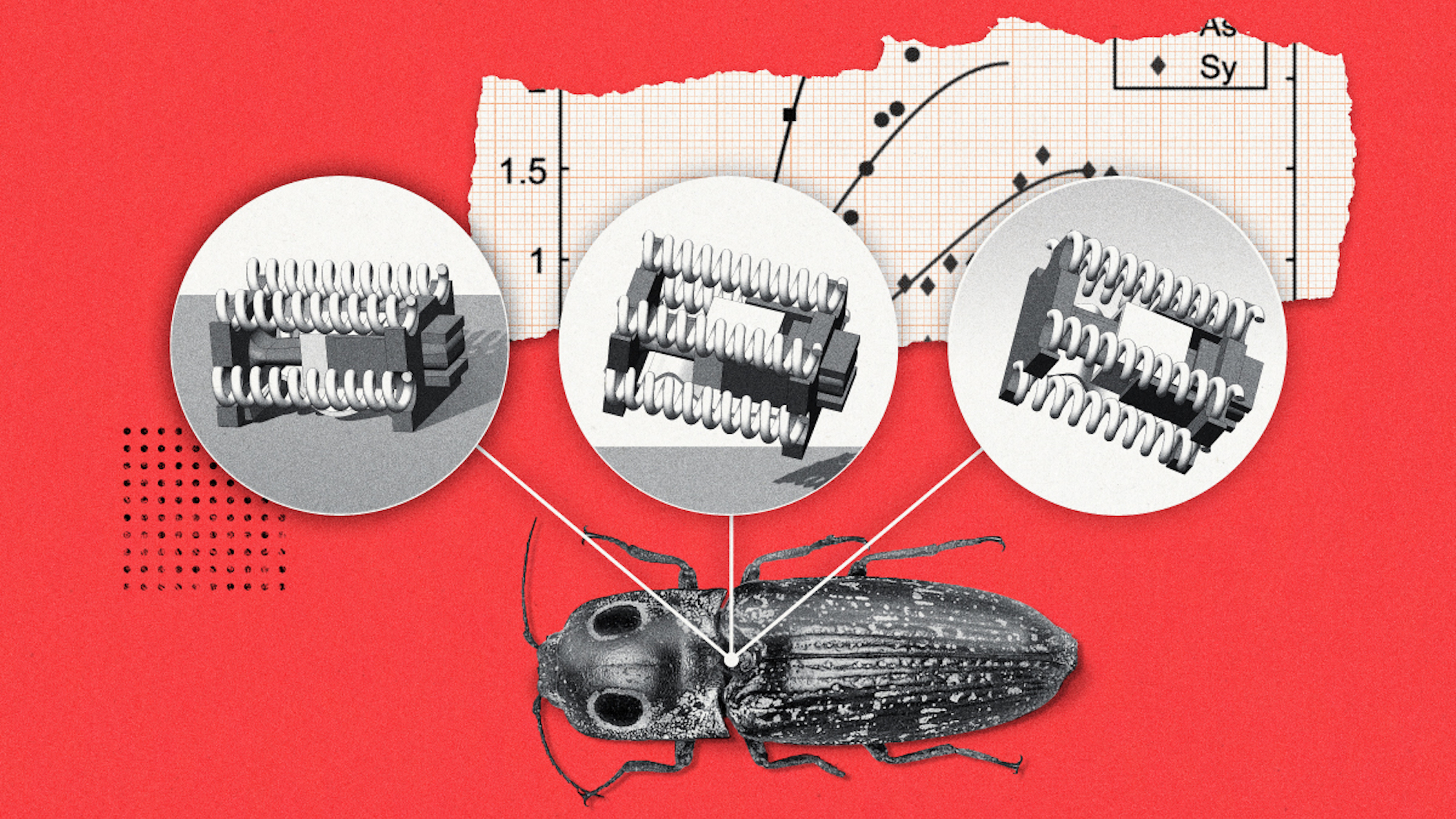

Animal-inspired robots are all the rage now, with recent creations drawing abilities from birds, snakes, octopuses, and even insects.The buggy creature kingdom just offered its newest inspiration, one which could offer huge benefits at a very small scale.
A group of mechanical engineering researchers across multiple universities have spent the last decade delving into click beetles’ evolution, anatomy, and movements. In recent years, the team focused on how a muscle within the tiny insect’s thorax enables it to not only travel many times its body length, but also right itself if turned over on its back. The propulsion, known as snap buckling, is seen as a natural feature that could be adapted into the field of robotics.
[Related: Watch this bird-like robot make a graceful landing on its perch.]
As detailed in a new paper published with Proceedings of the National Academy of Sciences, a team lead by Sameh Tawfick designed a series of coiled actuators which mimic click beetles’ anatomy. When pulled, the beam-shaped device buckles and stores elastic energy like the insects’ thorax muscle. Once the actuator is released, the resultant amplified boost propels the tiny robots upward, allowing it to maneuver over obstacles at roughly the same speed as the real bug. The movement, known as dynamic buckling cascading, could be used by future robots to traverse and examine the innards of large systems like jet turbines using small, on-board cameras.
Tawfick explained in a statement that the team experimented with four robotic actuator variations to determine which were the most economical and effective based on biological data and mathematical modeling. In the end, two designs successfully propelled the robots without any need for manual intervention.
[Related: This robot gets its super smelling power from locust antennae.]
“Moving forward, we do not have a set approach on the exact design of the next generation of these robots, but this study plants a seed in the evolution of this technology,” said Tawfick, explaining that the entire trial-and-error process is similar to biological evolution.
Scientists also believe that future, insect-sized robots using the dynamic buckling cascade actuators could be deployed among agricultural settings like large farms. Often technology such as drones and rovers monitor fields, but these miniscule devices could open up entirely new, more delicate methods of observation and recording.